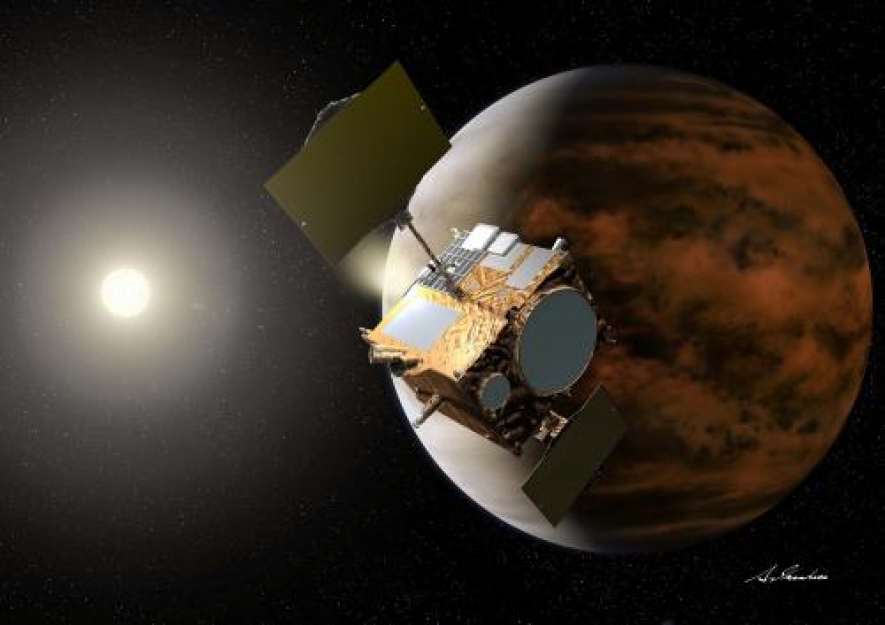This mission, which has been in space since 2010, already tried a first time to achieve that goal and failed due to engine problems.
Akatsuki spacecraft was sent to the second planet of the Solar System with the intention of learning more about its weather and surface conditions.
Since Akatsuki failed to fulfill its goal of orbiting Venus, the Japanese spacecraft has remained in a heliocentric orbit, about 134 million kilometers from the planet, making measurements and observations of the surface, and the influence of the solar wind.
After a thorough examination Japan's space agency determined that the main engine of the probe had burned, probably by the malfunction of the valve in the fuel pressure system of the spacecraft.
This caused the probe to reach the high temperatures that damage the engine combustion chamber and nozzle.
This problems led JAXA to improvise, adjust the orbit of the spacecraft and adapt the instruments to the new situation. Plus it was necessary to make new estimates of the lifetime of the probe and fuel consumption.
Initially the plan was to make another insertion attempt into the orbit in the late 2016, but the speed of the spacecraft decreases more than expected, so this task was moved a year forward.
Experts believe that this opportunity will be the last, due to the extent of the damage it will cause to the engines and other systems of the spacecraft.
If all goes well, Akatsuki will go into orbit around Venus at a distance from 300 to 400 thousand kilometers from the surface, using the 12 smaller engines. The original mission watched an elliptical orbit at 80 thousand kilometers.(PL/KH)



















